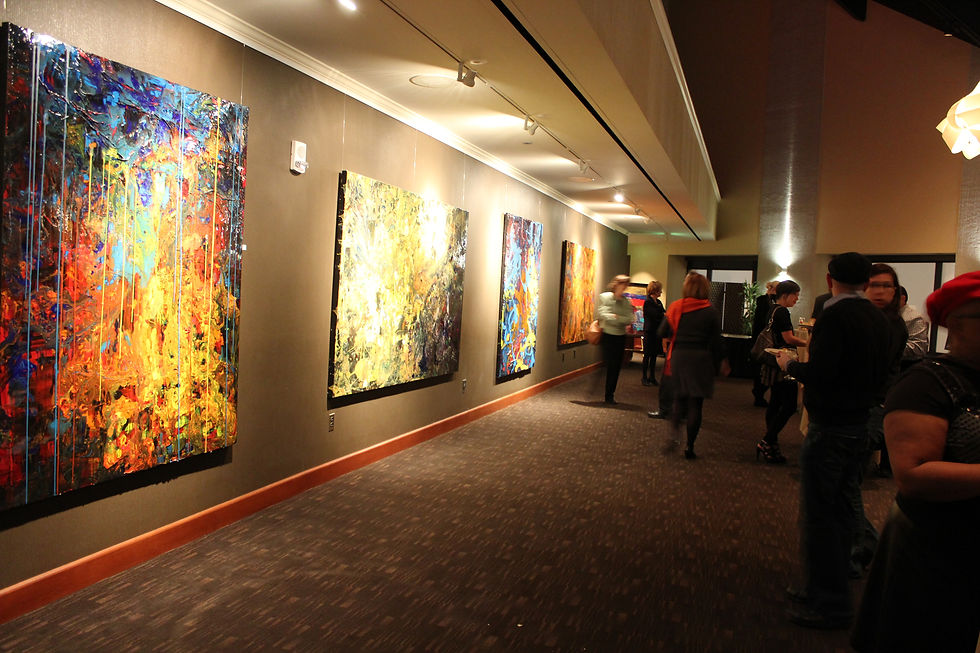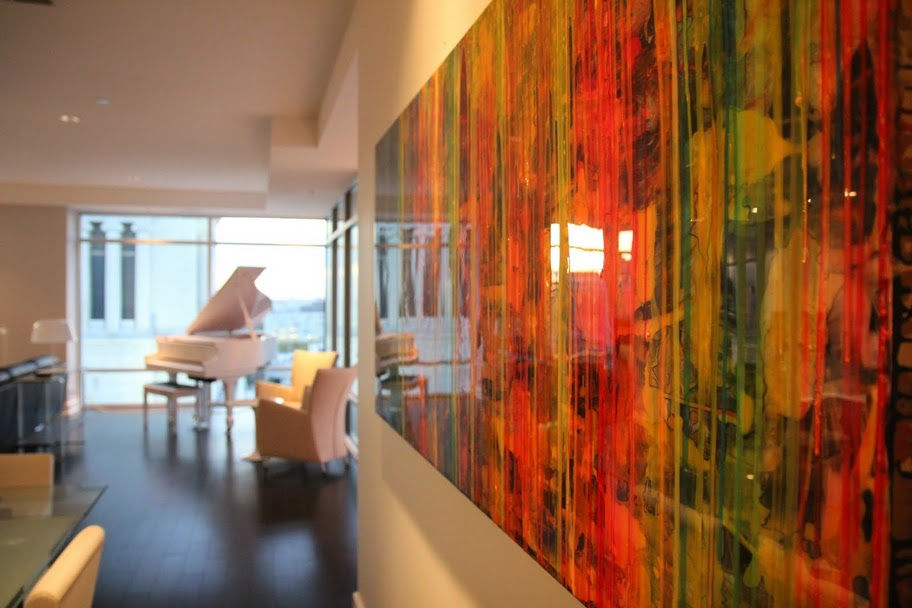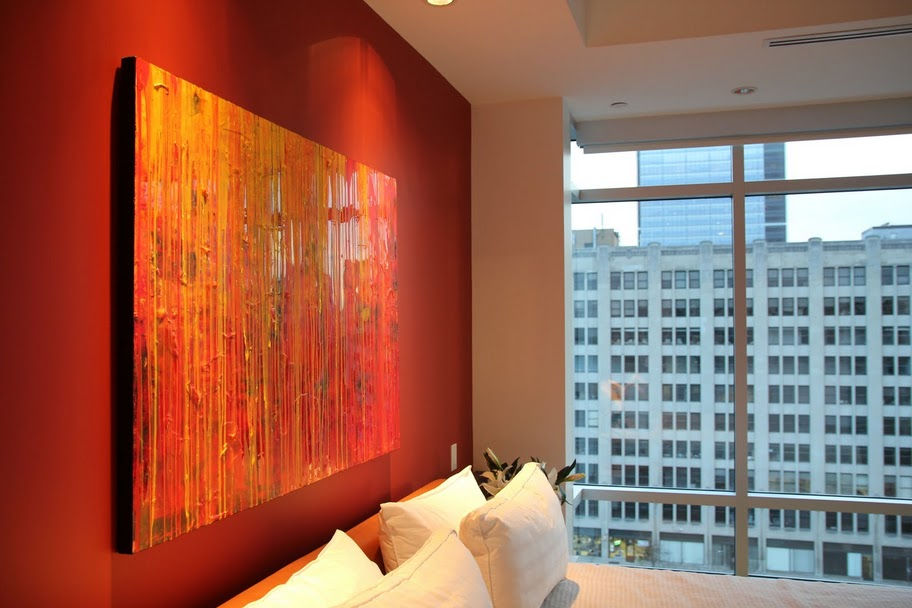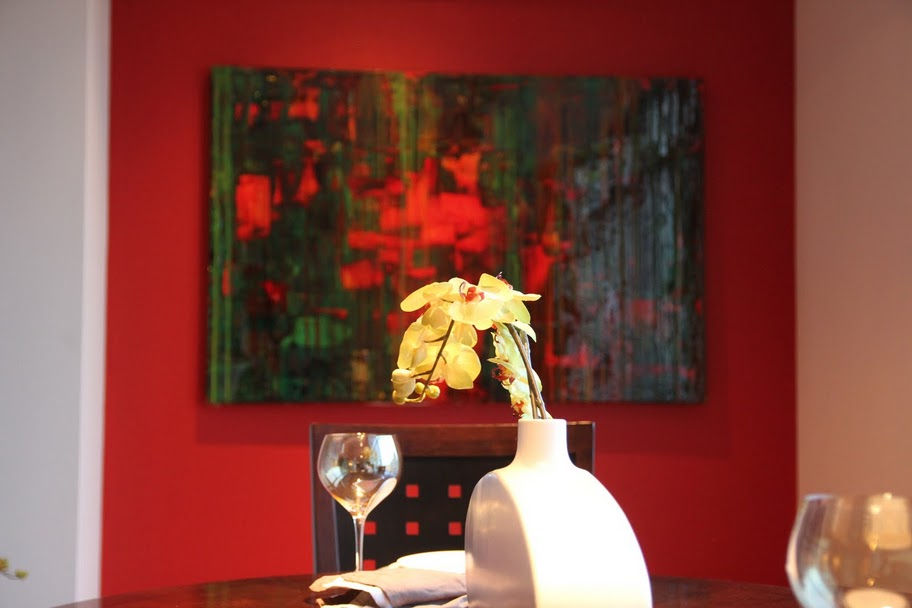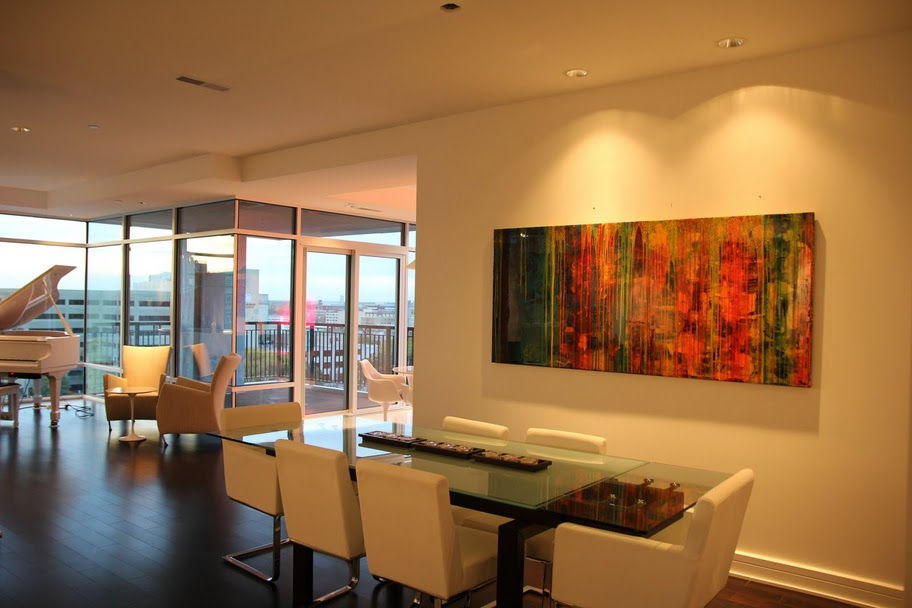slide:
slīd/ verb
It's a Living Gesture
Constant Contact, Continuous Motion
Sliding isn't passive—it’s a living gesture. Zickler coaxes the paint to stay in motion while maintaining unbroken contact with the canvas. That uninterrupted flow creates ribbons, waves, and marbled effects that shimmer beneath layers of resin. Every move matters. Every angle shifts the story. He doesn’t brush paint onto the canvas—he lets it glide.

The Art of the Slide
Jason Zickler’s slide technique is a study in control and surrender. He begins by laying the canvas flat, then carefully manipulates it—tilting, rotating, and guiding the paint across the surface. As colors move in fluid contact, they react to gravity, surface tension, and time. The result is a hypnotic dance of pigment that feels both precise and unpredictable.

Gloss Meets Gravity
In Zickler’s studio, gloss and gravity are collaborators. The rich, resin-coated surfaces he’s known for are born from movement—color poured and slid across the canvas, then frozen in place. The resin locks in that sense of motion, capturing it mid-glide like a still frame in an emotional film. The result? Surfaces that appear to ripple with light, as if the paint never stopped moving.
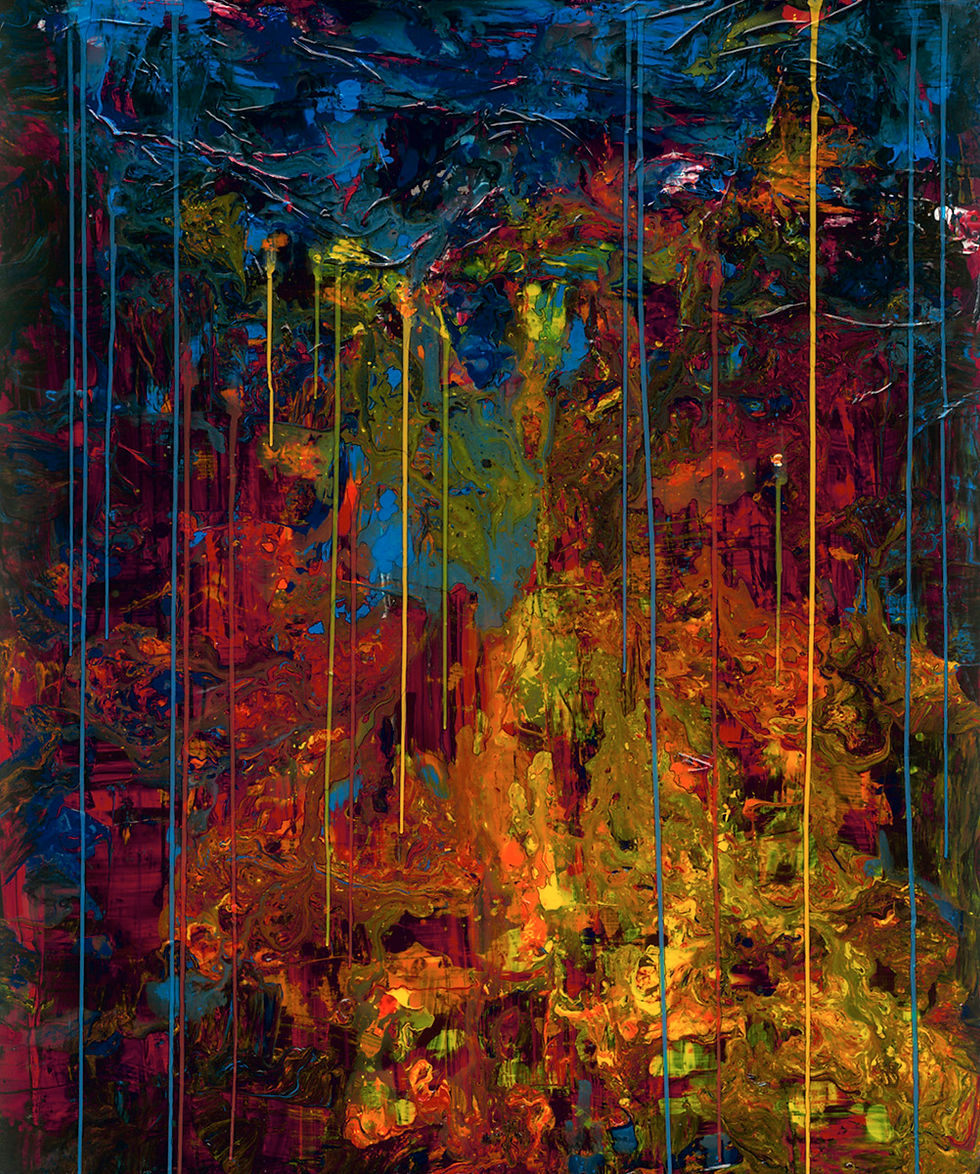
Following Physical Rules
Guided by Instinct
While the slide technique follows physical rules, Zickler approaches it with instinct and emotion. Each tilt of the canvas is a response—sometimes to the color, sometimes to memory. The process can’t be rushed. It’s a conversation between hand and material, between artist and gravity. Zickler knows when to hold steady—and when to let it slide.


Layers That Speak
Zickler’s work isn’t just about what you see on the surface. Sliding paint builds layers—literal and emotional. Colors overlap and stretch, creating depth and transparency. The viewer is pulled into the piece, following the paths the paint once traveled. Each layer becomes a memory, and the finished piece, a visible timeline of the artist’s decisions, hesitations, and movements.
Motion, Frozen in Time
What makes Zickler’s slide work unforgettable is the tension between motion and stillness. The paint glides, flows, and collides—then is sealed forever under glassy resin. The finished work is quiet, but charged. Movement is still visible in every curve and ripple, captured mid-slide like a snapshot of emotion made physical. It’s not just a painting—it’s momentum, paused.
